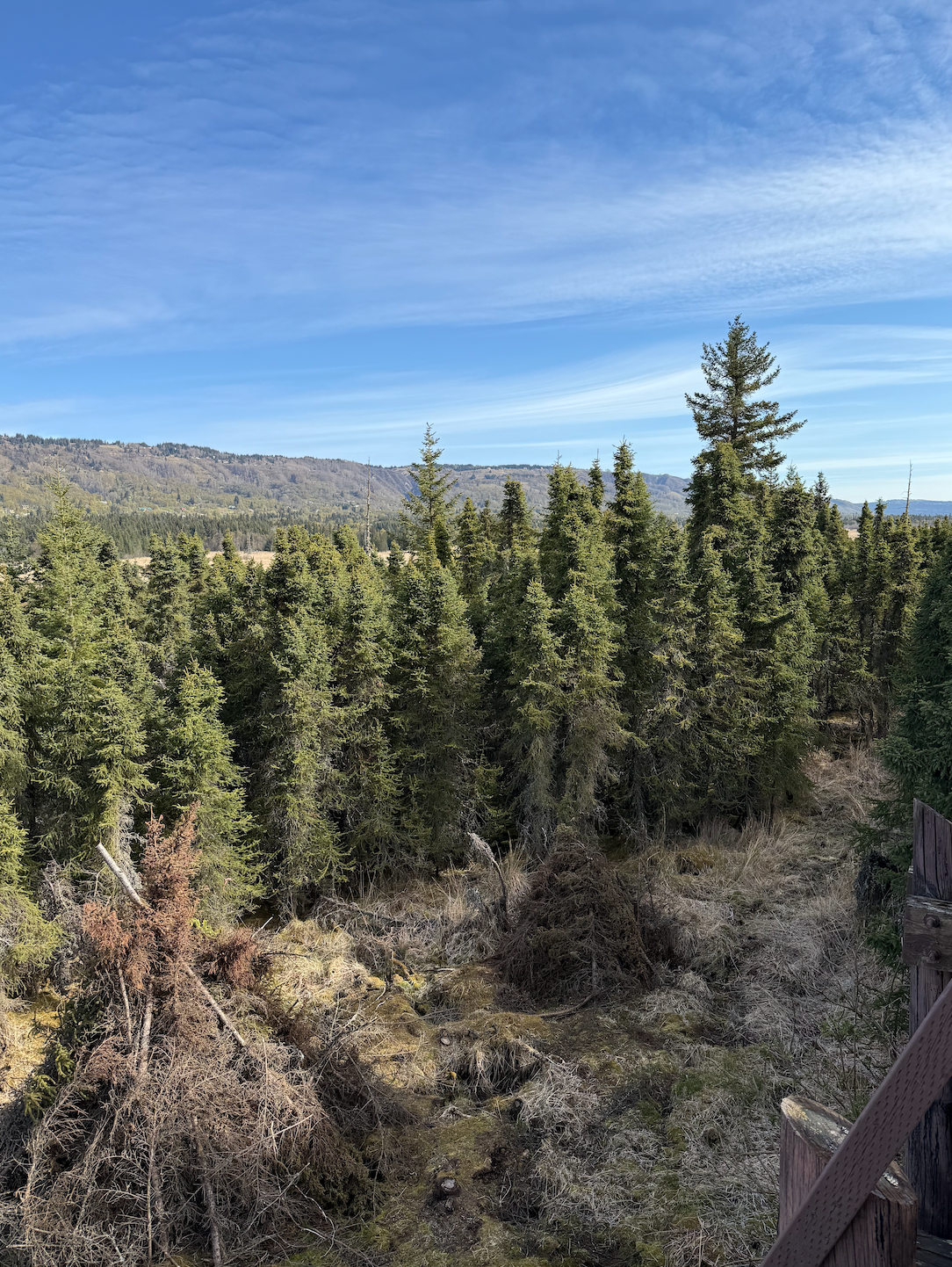Birdsong Isn't Background Noise
Now, when I sit on my porch, I don’t just see a tree, I see a home for a Sandpiper family. It’s like the difference between hearing background music at the coffee shop and listening to your friend play guitar and sing while you sip. Its the difference between being alone and being connected.

I call myself an “everyday mystic” because I’ve found that our dominant, human-centered culture is so pervasive, it can take the perspective of a mystic to pierce it. I looked for meaning around me using a spiritual perspective, and I found deeper connection in a hidden world that is more natural than it is supernatural. The purpose so many of us long for is all around us if we choose to look for it. All it takes is a willingness to step outside of the default American perspective, one moment at a time.
Each week, I provide a gentle turning practice to help us shift our perspective. You may find it helpful to have a journal at hand, but it’s not required. I hope these practices of body and heart bring you peace and connection in the middle of whatever storm is blowing around you at the moment. Today’s newsletter is the second in my series about connecting with and learning from birds.
The amazing thing about knowledge is, the more we learn, the more we can see. And the more we can see, the more curious we become. And the more curious we become, the more we learn—and so the cycle continues. A little bit of knowledge can snowball into a deeply felt and intimate experience of something we barely noticed before.
That’s been my experience with birds. I used to listen birdsong the way I might enjoy a band playing quietly in the corner of a coffee shop. It’s pleasant for the ears, and preferable to silence or the noise of people sipping coffee. Or, with birds, preferable to road noise. Then I listened alongside other birders, and I learned to distinguish some calls. I learned to look for the birds that I heard. I learned that the whoo-whoo-whoo of a Wilson’s Snipe isn’t a call, but the sound of its wings. I’d always particularly loved the song of the Ruby-crowned Kinglet, even before I knew what bird it belonged to. Paying closer attention taught me that the olive-brown kinglet particularly loves to perch at the very tip top of the tallest spruce and fan his red crown of feathers. Now I have the added joy of watching for his unique and unexpected display when I hear his call.
For today’s gentle turning, I want to bring you into my evolving experience of birds. First, take a look at the picture at the top of this post. I took this in Homer during the Kachemak Bay Shorebird Festival this year. This location is a birding hot spot!! How many birds can you see? I’ll wait here and count to myself while you do.
…
…
How many birds did you find? Five? Two? Yeah, I didn’t see any either. But when I was there I could HEAR them. You can check out this recording if you like.(Warning: NOT a professional recording. There’s plenty of—sigh—road noise. The more I pay attention to birds, the more I hate road noise. I can only imagine how the birds feel about it….)
I could hear that there were birds, but I could only distinguish one or two species. Then I used an amazing (free!) app, Merlin, designed by Cornell University. It helps you identify birds by their song. Here is the list of birds it helped me identify from that recording when I couldn’t actually SEE any of them:
• Black-billed Magpie (Okay, anyone in Alaska will know that one. The call is pretty distinct and we see them ALL the time.)
• Greater White-fronted Goose
• Wilson’s Snipe
• Ring-necked Pheasant (no, it’s not native to Alaska)
• Pine Siskin
• Northern Pintail
• Pacific Wren
• American Wigeon
• Ruby-crowned Kinglet (my favorite)
• Boreal Chickadee
• Dark-eyed Junco
• Golden-crowned Kinglet
• Green-winged Teal
What a wealth of birds! And they were all invisible to my eye when I took the photo. Does knowing they’re there change your perception of that space? It did for me. What looked like a crop of trees with some pleasant nature sound in the background suddenly transforms into a rich habitat. It turns the scene from backdrop into a home for bird friends. I don’t know about you, but it makes me want to sit and wait and watch until I can spot them with my eyes.
Once, at my home in Anchorage, I heard a quiet chirp I didn’t recognize coming from a neighbor’s tree. I recorded the sound with the Merlin app, and it identified a Solitary Sandpiper. Anchorage is on the ocean, but my home is not exactly close to the shore. I never would have guessed that a sandpiper would find its way to our neighborhood. I learned from the app that they like to nest inland, using nests made by other birds. They also tend to nest alone. (Hence the name and the quiet, single chirrup I heard.) Now, when I sit on my porch, I don’t just see a tree, I see a home for a Sandpiper family. It’s like the difference between hearing background music at the coffee shop and listening to your friend play guitar and sing while you sip. Its the difference between being alone and being connected.
If you’d like to go deeper this week, download the Merlin app and try out the sound identification in your own yard or other space you visit frequently. Once the app identifies the birds, you can learn more about them with photos, descriptions, and maps of their migration. I hope learning about your bird neighbors enriches your experience of your own space!
Are you enjoying what you're reading? Please share with your friends! And remember: this is a reader supported publication. All content is free, but a paid subscription helps keep the lights on. Consider supporting content you love!
(Please note that I am not a non-profit organization. These gifts are not tax-deductible.)
